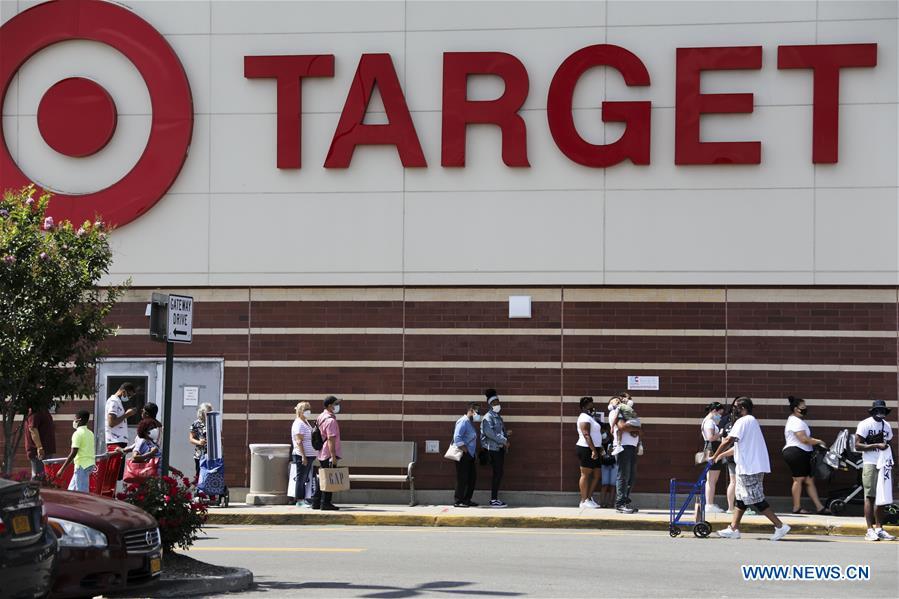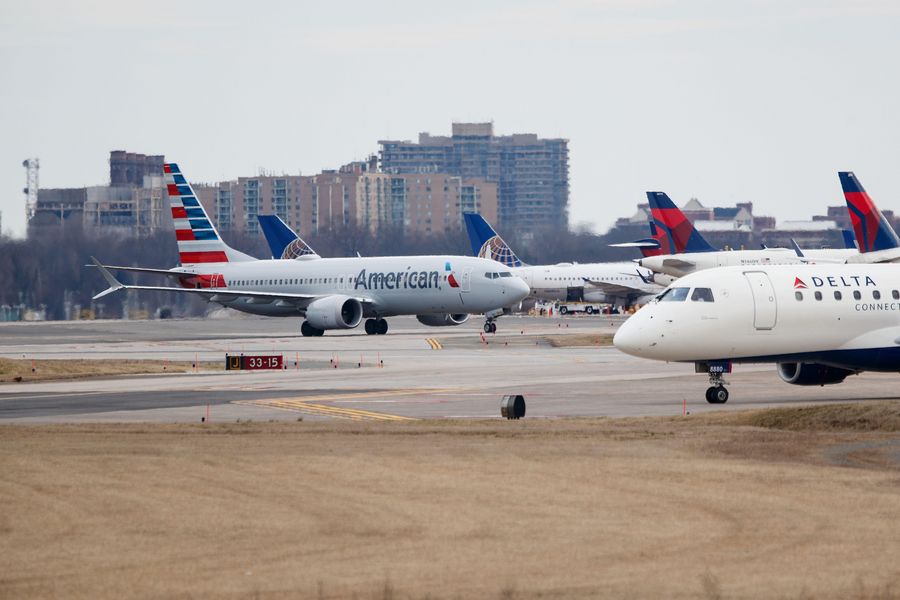Dark clouds over the US economy
- By Heiko Khoo
 0 Comment(s)
0 Comment(s) Print
Print E-mail China.org.cn, July 22, 2020
E-mail China.org.cn, July 22, 2020

The battle against the COVID-19 pandemic in the United States has seen a variety of erratic and ineffective containment measures applied from state to state.
Whereas New York State imposed a stringent lockdown – albeit too late to avoid a huge death toll – many other states attempted to get by with minimal restrictions. Echoing President Donald Trump's skepticism, a significant minority continues to deny the ferocity of this particular viral outbreak.
Consequently, the dramatic scenes of suffering played out in New York between March and June may be repeated in other states. Typical of the confusion, in some places, containment measures have been adopted, amended and jettisoned, and then reintroduced again.
Capitalist ideologues assumed that the free market would spontaneously produce solutions such as vaccines, cures and technologies to assist in epidemic control.
Yet, despite having the world's most expensive health care system, it has let the people down. Furthermore, massive government intervention to revive the economy has also failed.
The U.S. economy went into a tailspin with a 40% shrinkage between March and June 2020. There was a modest economic "rebound" in June, as many business sectors reopened – but this does not constitute an economic "recovery."
A rebound is a transient boost, which will be followed by more stagnation or further contraction. A recovery would entail sustained growth filled with normality and then overtaking previous highs.
In March 2020 the Coronavirus Aid, Relief, and Economic Security Act, (CARES) aimed to pump $1.45 trillion into the economy through loans and grants to businesses at all levels. This amounted to about 5.5% of the existing GDP.
By sector, large companies were offered a total of $500 billion, medium sized ones a cumulative $600 billion and small enterprises $350 billion. The support program initially allotted $1.76 trillion in loans and grants.
In addition, another $500 billion was allocated to help individual workers and households. Each adult received $1,200 and an extra $600 was paid to those unemployed. Hospitals and the health sector in general received some $200 billion in emergency relief.
Tax cuts totaling $650 billion were introduced, but 97% of those who benefited were families earning more than $100,000 per year.
In fact, $3 trillion was allocated under the CARES Act overall, equal to about 11% of GDP. However, of the $1.7 trillion allocated to businesses, very little found its way into the real economy.
Large and medium sized enterprises seem very reluctant to tap these lending facilities. Of the $500 billion available to big enterprises like airlines and those in the defense sector only $100 billion was actually utilized.
By mid-June, hardly any medium-sized enterprises had drawn funds from the $600 billion on offer. In contrast, small businesses spent $520 billion under the Paycheck Protection Program (PPP) loans on offer that can be converted into grants for training employees. However, much of this money went to wealthier small enterprises, many of which did not need the loans in the first place.
So, what's the reason behind this under-utilization?
Actually, American businesses are awash with cash. Already in January and February many drew on generous credit lines offered by their banks. Some borrowed on easy terms in expectation of the crisis. Fortune 500 U.S. businesses raised more than $1.3 trillion in new corporate investment grade bonds from March to May – more than that for the whole of 2019.
Many businesses also suspended dividend payments, in contrast to 2019 when they spent $1.3 trillion covering buybacks and paying out dividends. Companies also were active in selling off minority stock in other companies. Home working achieved big gains in cost-cutting, especially for technology companies.
Borrowing under the CARES ACT required that 70% of the loans be spent on retaining workers. Instead, corporations took to laying workers off, borrowing from credit markets, issuing new bonds, and preserving their cash hoard.

Boeing, for example, was allocated over $50 billion but instead chose to raise $25 billion by issuing bonds while laying off 16,000 workers.
Where there is evidence of initial relaxation and then re-imposition of virus containment measures, this will slash spending and investment with a devastating impact on the travel, leisure and hospitality sectors in particular. Many of these companies will go bust.
A strong environment of uncertainty means businesses are hoarding cash and consumers and households are saving more.
Many businesses have decided to cut costs permanently, for example by shifting to home working, or re-employing workers on a temporary or part-time basis.
The synchronized nature of the global contraction undermines exports further hitting American investment, employment, and business-consumer spending. Investment in the economy is also hampered by uncertainty about the forthcoming presidential election and the prospect of further outbreaks of civil unrest like the Black Lives Matter protests.
In those sectors most badly affected by the pandemic defaults are rising. There is a real danger that corporate, household, state, and local government debt defaults will cause banks to collapse.
In fact, the overall prospects for the real economy in the U.S. are worse than at any time since the 1930s.
Heiko Khoo is a columnist with China.org.cn. For more information please visit:
http://china.org.cn/opinion/heikokhoo.htm
Opinion articles reflect the views of their authors, not necessarily those of China.org.cn.
If you would like to contribute, please contact us at opinion@china.org.cn.






Go to Forum >>0 Comment(s)